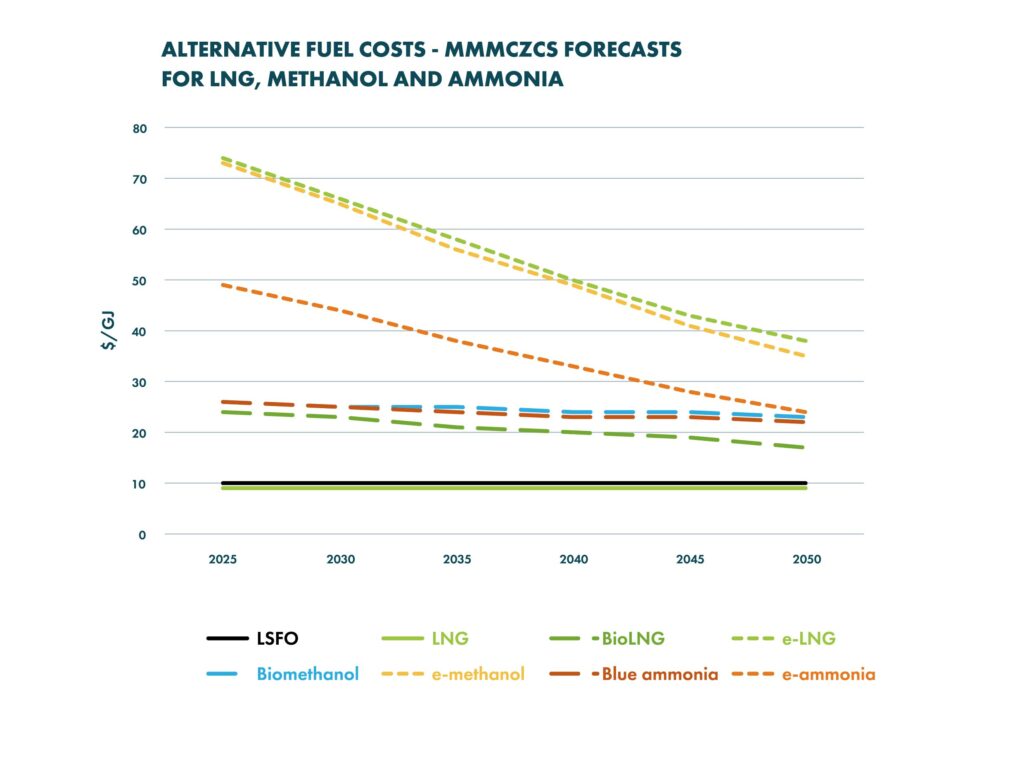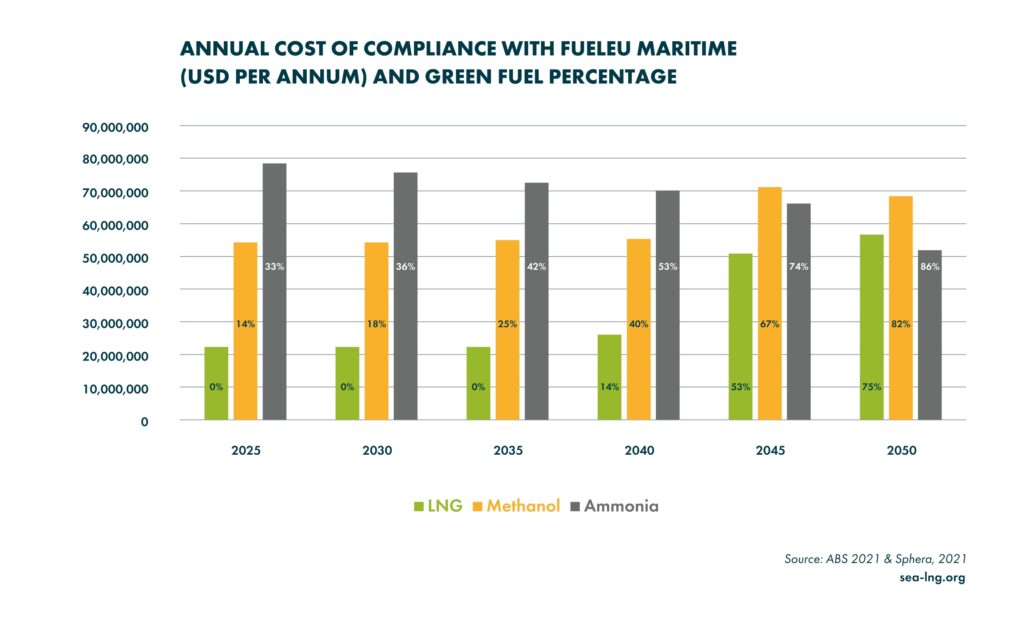SEA-LNG: LNG has half the lifetime cost of methanol and ammonia
The lifetime fuel costs of meeting key European decarbonisation targets for shipping through the LNG pathway are expected to be roughly half that of the methanol or ammonia pathways, according to the findings of a new analysis from the SEA-LNG coalition.
The multi-sector coalition promotes the commercial and environmental benefits of LNG as a decarbonization pathway.
The coalition said that the analysis builds on the recent work by the Mærsk Mc-Kinney Møller Center for Zero Carbon Shipping (MMMCZCS) projecting fuel costs for alternative marine fuels out to 2050. Using long-term price benchmarks for ammonia, methanol, and LNG as marine fuel, SEA-LNG has calculated the cost of compliance with FuelEU Maritime regulations for a typical 14k TEU newbuild container vessel coming into operation in 2025.

FuelEU Maritime requires vessels to reduce the intensity of greenhouse gases produced by their energy consumption in coming years against a benchmark of the fleetwide average in 2020.
Specifically, ships will have to cut their GHG intensity by 2% as of 2025, 6% as of 2030, 14,5% as of 2035, 31% as of 2040, 62% as of 2045 and 80% as of 2050. This would apply to ships above a gross tonnage of 5000, which are in principle responsible for 90% of CO2 emissions, and to all energy used on board in or between EU ports, as well as to 50% of energy used on voyages where the departure or arrival port is outside of the EU or in EU outermost regions.
SEA-LNG claims that grey versions of ammonia and methanol are not as environmentally friendly as liquefied natural gas (LNG). When compared to VLSFO, grey ammonia emits 47% more greenhouse gas (GHG) emissions, while grey methanol emits 14% more. On the other hand, fossil LNG offers a reduction of up to 23% in GHG emissions compared to VLSFO, the organization said.
This means that ship owners choosing LNG as fuel can meet reduction targets until 2039 without having to mix their fuel with low-carbon bio-LNG or renewable synthetic e-LNG, according to SEA-LNG.
The coalition added that owners of methanol and ammonia-fuelled vessels will need to include significant proportions of a green fuel immediately to meet the regulations, vastly inflating their fuel bills.

Based on the analysis, assuming an average fuel burn for the typical 14k TEU newbuild container vessel of 146 tonnes of VLSFO equivalent per day, a methanol-powered vessel would require a 14% green fuel blend to comply with FuelEU Maritime in 2025 at a fuel cost of almost USD55m per year, assuming the use of biomethanol.
An ammonia-powered vessel would require a 33% green fuel blend to comply and face a fuel bill of about USD80m per year if using e-ammonia.
LNG by contrast would require no blending with a fuel bill of just over USD20m per year.
By 2040, LNG would require a 14% green fuel blend, and annual fuel costs are expected to reach around USD25m, assuming the use of bio-LNG. Methanol’s green fuel blend requirement will have increased to 40%, resulting in an annual fuel bill of just over USD 55m, assuming the use of biomethanol, the analysis said. For ammonia, the blend ratio will have increased to 53% with a blended fuel cost of approximately USD70m.
By 2050, SEA-LNG analysis shows that all three fuel options will have significant blends of green fuels in the form of bio- and e-fuels and the organization expects to see a convergence in overall fuel costs.
The analysis indicates that methanol pathway is approximately 2.5 times more expensive and the ammonia pathway 3.5 times more expensive than that of LNG.

“Our analysis shows that lifetime fuel costs of achieving net-zero emissions through the LNG pathway are expected to be roughly half that of those for methanol and ammonia. This underlines the importance of understanding the implications of the journey to net zero as well as the destination. LNG offers GHG reductions today and a low cost, incremental solution for decarbonisation,” SEA-LNG COO Steve Esau said.
Source: World Maritime News
